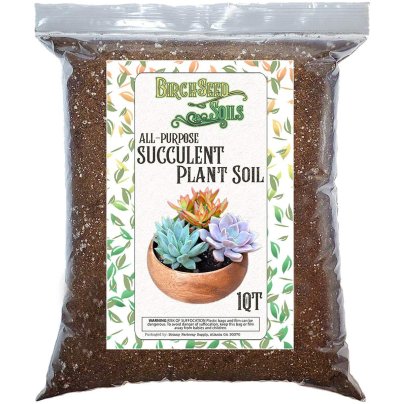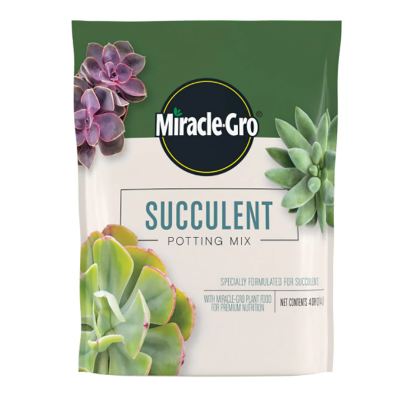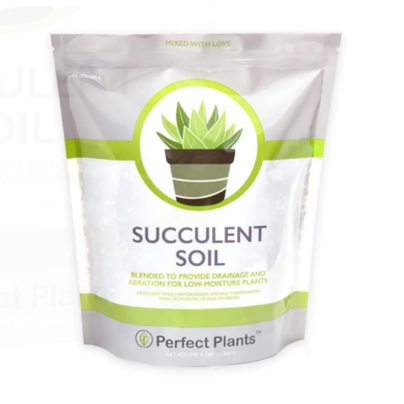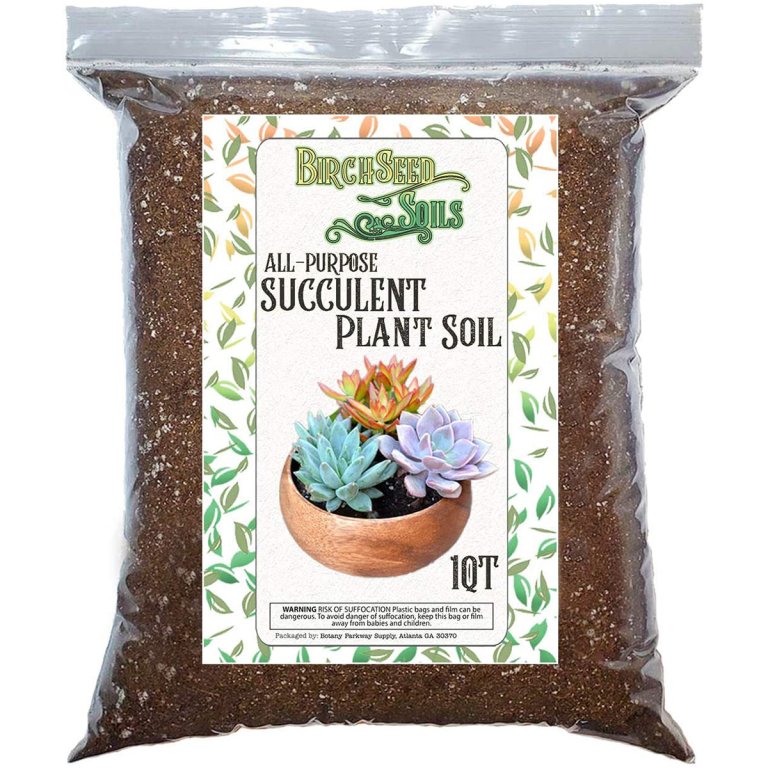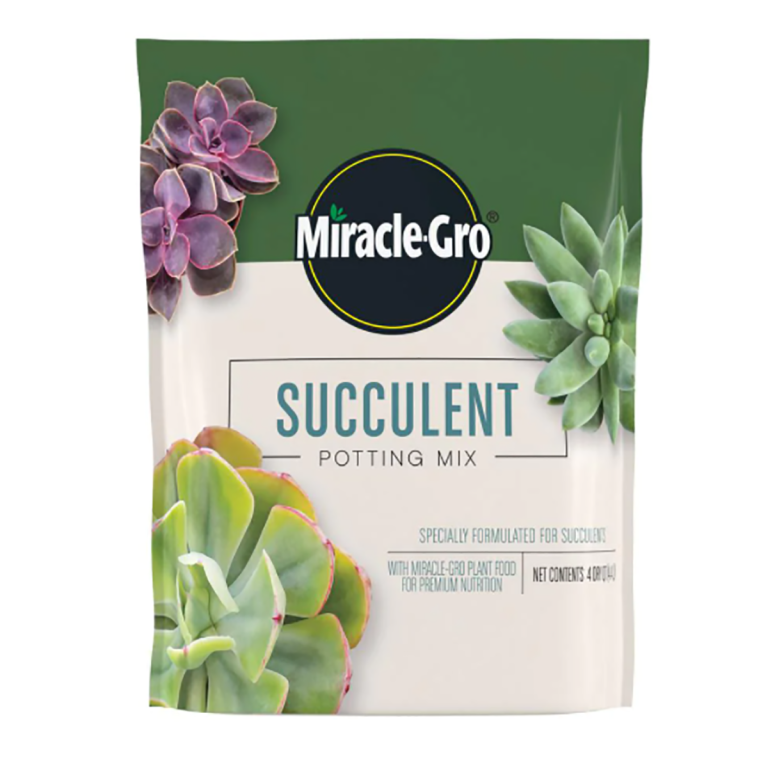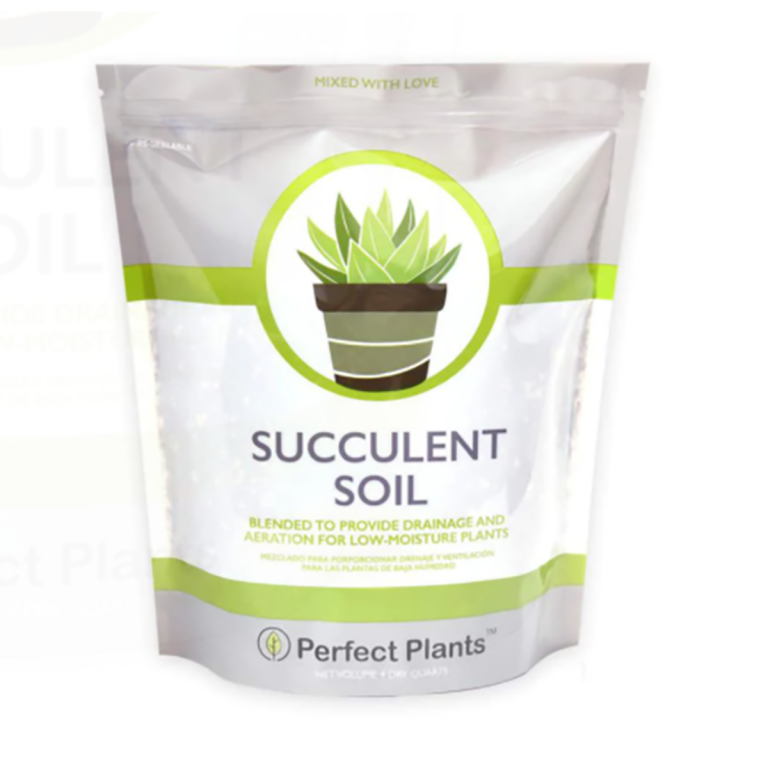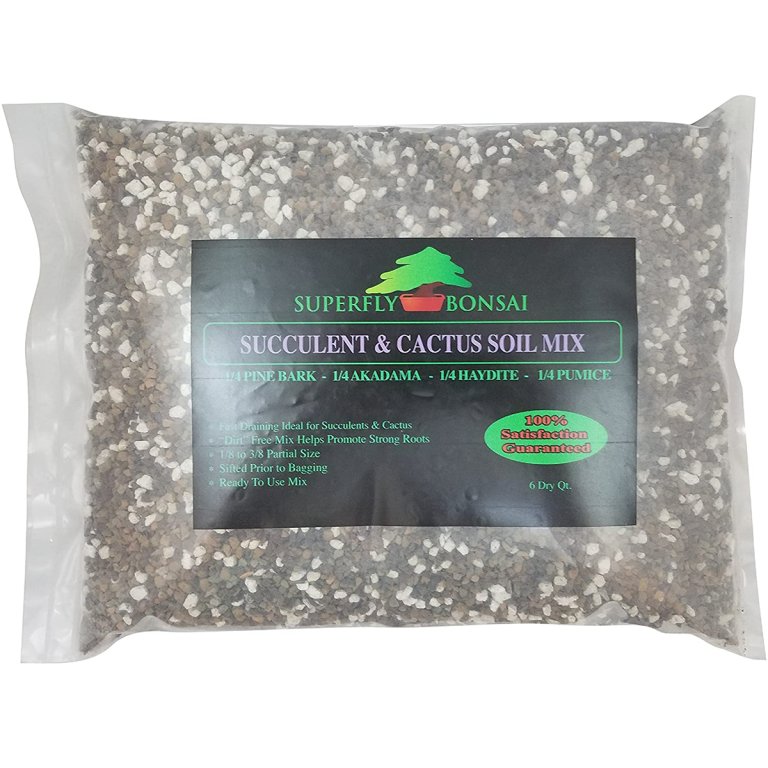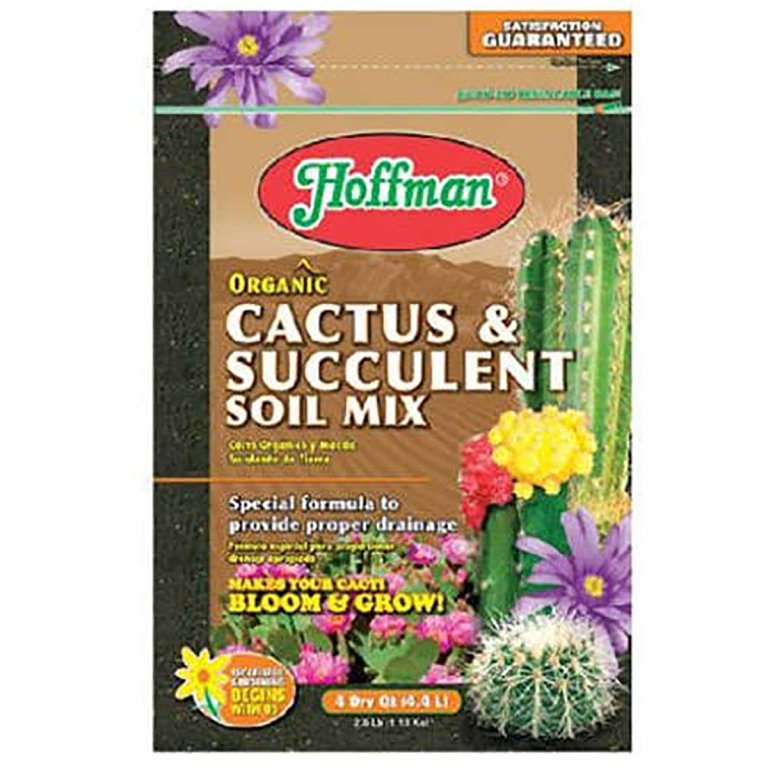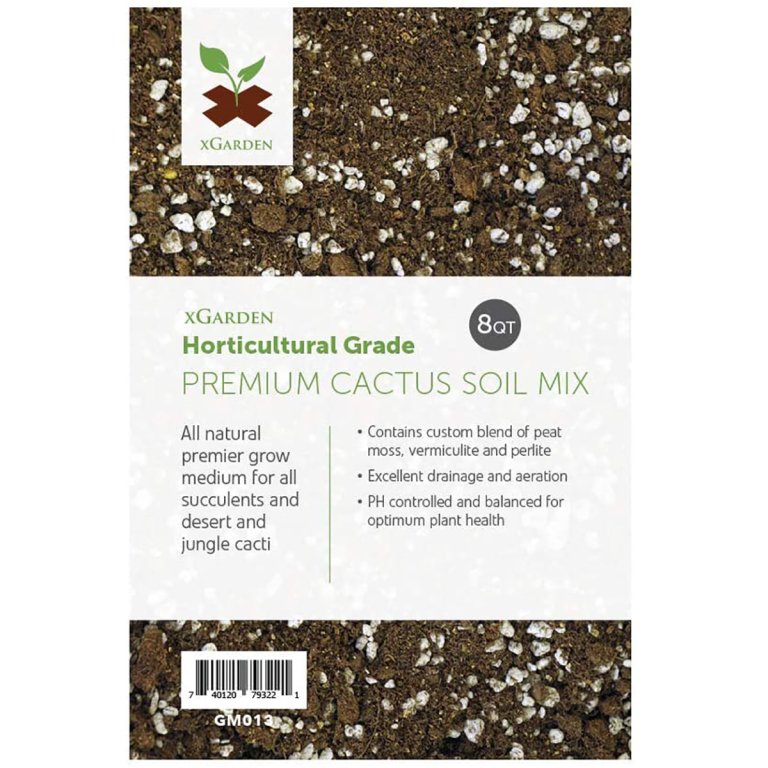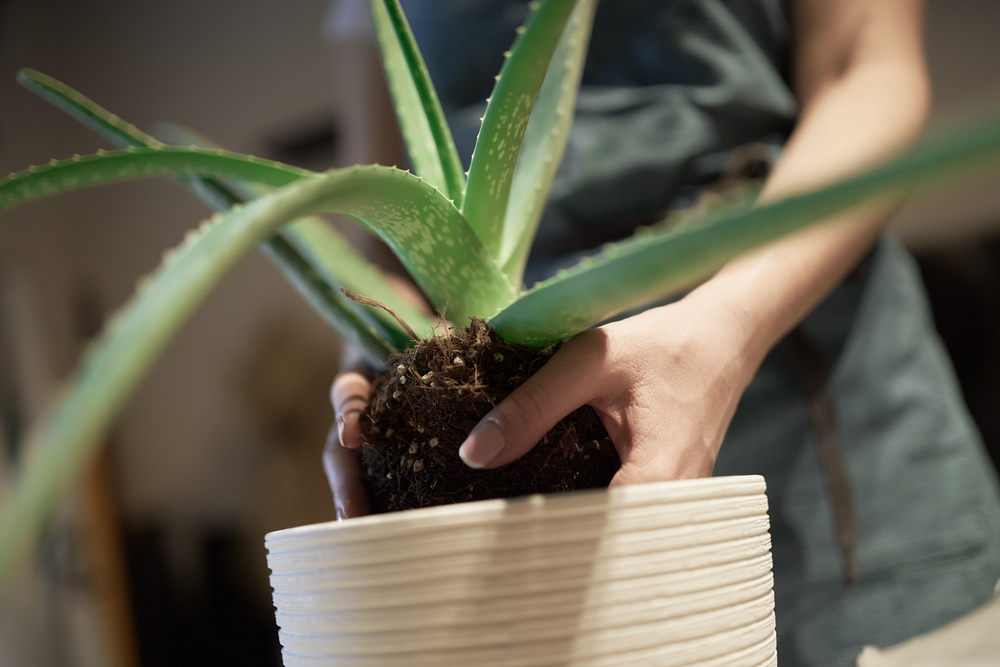
We may earn revenue from the products available on this page and participate in affiliate programs. Learn More ›
The aloe vera plant, a member of the Aloe genus, is cultivated for use in many products, such as lotions and cosmetics. Thanks to its thick, spiky leaves, it also adds an attractive, natural decorative element that makes it a popular houseplant. Plus, it can be good to have on hand at home as a salve for an accidental burn: Simply snip a bit of the leaf and apply the clear gel to the injury to speed healing.
Aloe vera, a perennial in warm climates, is fairly easy to grow indoors, though it does have one strict requirement: well-draining soil. Similar to other succulents, such as cacti, aloe vera doesn’t do well in growing mediums that hold water. The best soil for aloe vera often is sandy or contains small rocks that allow water to drain quickly out of the pot.
Ahead, learn what ingredients to look for when shopping for the best medium for this attractive succulent, and find out why the following products provide the best soil for aloe vera plants.
- BEST OVERALL: Generic Succulent Plant Soil
- BEST VALUE: Miracle-Gro Succulent Potting Mix
- BEST FOR DRAINAGE: Perfect Plants Organic Succulent Soil Mix
- BEST PREMIUM BLEND: Superfly Bonsai Succulent & Cactus Soil Mix
- BEST ORGANIC SOIL MIX: Hoffman Organic Cactus and Succulent Soil Mix
- ALSO CONSIDER: xGarden Cactus and Succulent Soil Mix
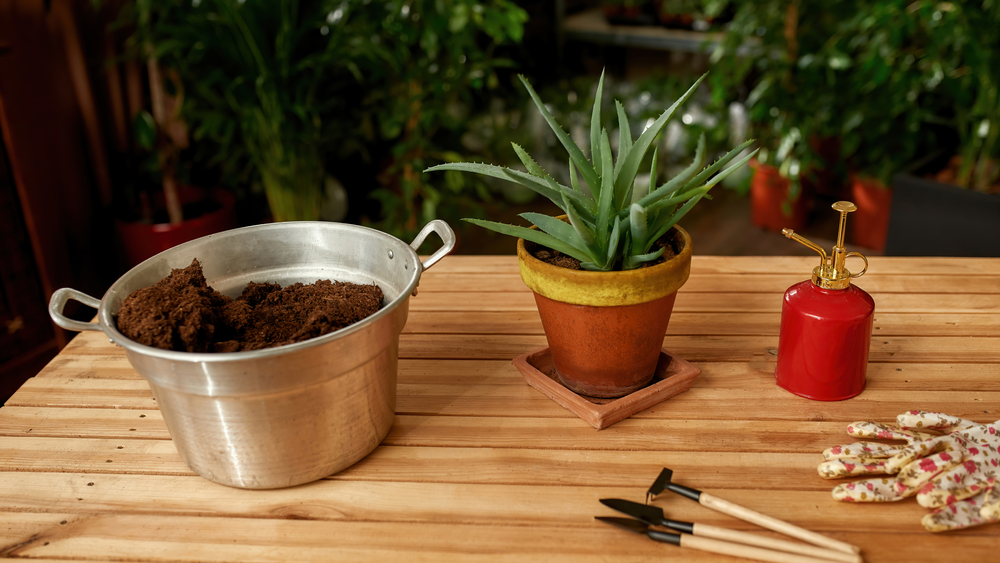
What to Consider When Choosing the Best Soil for Aloe Vera
Aloe vera is native to the sandy soil and dry conditions of the Arabian Peninsula, but today the plant is widely cultivated in tropical and warm arid regions throughout the globe. It’s one of only a few houseplants that thrives when located in a sunny southern window where it receives direct sunlight. With adequate light and the right soil, the plant can provide years of enjoyment.
Avoid planting aloe vera in all-purpose houseplant soil or soil gathered from the garden. Both types are too dense and can lead to root rot. Keep the following factors in mind when choosing aloe vera soil.
Ingredients
The best soil for aloe vera contains components that don’t hold water, such as gravel and sand. Other beneficial ingredients include:
- Pumice, a porous, lightweight volcanic rock that adds structural integrity to the grow mix and drains well.
- Perlite, a type of fluffy volcanic glass that resembles Styrofoam pellets. Sometimes called “volcanic popcorn,” perlite keeps potting soil from becoming compressed, but it does absorb a small amount of water and then releases it slowly.
- Chunks of bark, which are often used as a base ingredient in potting soil suitable for growing aloe vera.
- Lava rocks, another volcanic rock, adds stability to the soil and drains well.
- Peat moss, which may be included in some mixes but usually in small quantities since it retains some water.
- Fertilizer that is added to the mix to encourage healthy plant growth. Feeding an aloe vera plant won’t be necessary for 1 to 3 months if the blend contains a fertilizer product.
- Coconut coir, which keeps soil from compressing.
Drainage
To expedite good drainage when using the right soil, be sure to plant aloe vera in the right kind of pot. An unglazed clay or terra-cotta pot often works best because those materials are absorbent and will help remove excess water from the soil. The pot must also have drainage holes in the bottom so water will run out.
For the best drainage, consider setting the plant in a sink when watering, which will allow the excess water to run out and down the drain. If that’s not possible due to the size of the pot or location, let water collect in a plant saucer and then, after 30 minutes or so, dump the water from the saucer to keep the potting soil from reabsorbing it.
Aeration
Like many succulents, the roots of the aloe vera plant like to dry out slightly (but not completely) between waterings. The combination of large ingredients, such as bark chips and rocks, create tiny air pockets in the soil that give the roots direct access to oxygen. At the same time, aloe does well if the soil is slightly moisture retentive. Components such as perlite and peat moss absorb a small amount of water and then gradually release it. In this way, the plant’s roots have access to both oxygen and a small degree of moisture.
The biggest mistake new growers make is watering the plant too little and too frequently. Rather than giving aloe vera just a bit of water every week, give it enough water so that it runs out the drain holes at the bottom of the pot—but only water the plant every 3 weeks. This allows the plant’s roots to absorb the water it stores as a gel in its leaves and allows the roots to dry out before the next watering. During the winter, when aloe is resting, watering can be reduced to once every 4 weeks.
pH Level
Aloe vera is tolerant of a wide pH range, and it will usually grow well in soil with a pH that varies from 5.5 to 8.5 on the pH scale. The pH scale runs from 0 to 14, with 7 being considered neutral. Numbers higher than 7 are more alkaline, and numbers lower than 7 are more acidic. Inexpensive pH testers are available from gardening centers and online.
Most succulent growing mixes will fall into the 5.5 to 8.5 pH range, but keep in mind that soil pH changes when the plant is watered. Fortunately, the pH of tap water rarely causes a problem for aloe vera because tap water typically ranges from 6.5 to 8.5 on the pH scale. Still, if dealing with an unhealthy aloe plant and wondering if the tap water is the culprit, consider collecting rainwater or giving the plant filtered water.
Making Multipurpose Mix Suitable for Aloe Vera
Growing mixes designed for cacti and other succulents are also suitable for growing aloe vera. However, general multipurpose houseplant mixes are often too dense and retain too much water, even if they’re labeled as “well-draining.” That said, all-purpose houseplant soil can usually be amended by adding sand or gravel to make it suitable for growing aloe vera. An appropriate ratio for turning all-purpose houseplant growing mix into a mixture more appropriate for succulents is one-part-mix to one-part-sand or -gravel (by volume).
In addition to enhancing the drainage, sand or gravel adds weight and substance to the soil, which helps anchor the roots of large aloe vera plants. A mature aloe vera can reach up to 2 feet in height and width, and its heavy, gel-filled leaves can cause the plant to topple to the side and pull the roots out of soil with weak structural integrity.
Our Top Picks
To qualify for a spot in the following lineup, these indoor soil mixes had to be specifically designed for growing succulents and they had to drain exceptionally well. Any one of the products below is well suited for growing aloe vera, and each contains components that will permit the plant’s roots to access the oxygen they need to thrive.
Best Overall
Generic Succulent Plant Soil
Pros
- Drains well
- Sand provides structural integrity
- Formulated for growing healthy succulents
Cons
- Small quart-size bag
Product Specs
- Designed for Succulents: Yes
- Ingredients: Sphagnum peat moss, perlite, lime, sand
- Fertilizer Included: No
There’s no need to worry about overwatering with this succulent mixture that contains peat moss, perlite, lime, and horticultural-grade sand. The sand and lime help the mix drain rapidly, while the peat moss and perlite absorb a bit of moisture and release it slowly.
The mixture also offers ample aeration to keep aloe vera roots healthy, and it won’t become compressed over time. However, it comes in a rather small 1-quart-size bag, so order multiple bags when repotting a large aloe vera. A single bag of this succulent plant soil is sufficient for repotting one or two small aloe vera.
Get the Generic succulent soil on Amazon.
Best Value
Miracle-Gro Succulent Potting Mix
Pros
- Drains well
- Fertilizer included
- Formulated for growing healthy succulents
Cons
- Does not contain sand or gravel; better suited to small plants
Product Specs
- Designed for Succulents: Yes
- Ingredients: Sphagnum peat moss, processed forest products, fertilizer, wetting agent
- Fertilizer Included: Yes
To save money on succulent soil, rely on this potting mix from Miracle-Gro. It’s designed to drain well while offering aloe vera what it needs for a healthy start—and it comes at an affordable price point. The mixture is a blend of sphagnum peat moss, processed forest products, and a wetting agent that creates a healthy, aerated foundation for aloe vera roots.
As with most Miracle-Gro potting mixes, this blend has an added bit of fertilizer to help boost root development of newly planted succulents. The fertilizer will feed aloe vera for the first month. After that, use an all-purpose fertilizer as recommended by the manufacturer to keep the plant healthy and growing well. The growing mix comes in a 4-quart bag.
Get the Miracle-Gro succulent soil at Amazon, The Home Depot, and Walmart.
Best For Drainage
Perfect Plants Organic Succulent Soil
Pros
- Fast draining
- Sand adds structural integrity to soil
- Large-size perlite for aeration
- Resealable bag
Cons
- No fertilizer added
Product Specs
- Designed for Succulents: Yes
- Ingredients: Bark, perlite, coir, sand
- Fertilizer Included: No
A combination of pine bark, perlite, coconut coir, and sand creates a fast-draining potting soil mixture that won’t retain water. The perlite chosen for this mix features large chunks to create additional loft in the soil and enhance faster drainage. This succulent-specific blend was created by one of the head growers at Perfect Plants to provide optimal soil for plants like aloe vera that need maximum drainage.
The bark in this mixture is composted, meaning it has undergone biodegradation, which adds nutritive value to the blend without the need for synthetic fertilizers. The mixture comes in a 4-quart bag, enough to repot a medium-to-large aloe vera plant.
Get the Perfect Plants succulent soil at The Home Depot and Walmart.
Best Premium Blend
Superfly Bonsai Succulent & Cactus Soil Mix
Pros
- Fast draining
- Retains moisture and releases it slowly
- Clay and sand offer soil stability
Cons
- On the pricey side
Product Specs
- Designed for Succulents: Yes
- Ingredients: Japanese akadama, pumice, pine bark, haydite
- Fertilizer Included: No
Miss a watering without harming an aloe vera, thanks to the inclusion of Japanese akadama and haydite in this potting mix from Superfly Bonsai. The two different types of clay pellets absorb a bit of moisture and release it gradually to keep aloe healthy. The pellets plus pumice granules also provide structural stability, which is vital for anchoring the roots of large, top-heavy aloe vera plants to keep them firmly in the pot.
The fourth impressive ingredient in this premium potting soil for aloe vera is New Zealand Pine Bark, which provides aeration and is slow to biodegrade. This well-draining mix comes in various sizes.
Get the Superfly Bonsai succulent soil on Amazon.
Best Organic Soil Mix
Hoffman Organic Cactus and Succulent Soil Mix
Pros
- Drains quickly
- Contains sand for structural integrity
- Professionally formulated for succulents
Cons
- More peat than some mixes
Product Specs
- Designed for Succulents: Yes
- Ingredients: Sphagnum peat moss, reed sedge peat, perlite, sand, and limestone
- Fertilizer Included: No
Those who want an organic soil for aloe vera should consider Hoffman’s Organic Cactus and Succulent Soil Mix. It contains a blend of sphagnum peat moss, reed sedge peat, perlite, sand, and limestone, an ideal combination for growing a variety of succulents, including aloe vera.
While peat is acidic in nature, and the Hoffman mixture contains two types of peat, the inclusion of limestone helps balance the acid/alkaline level to provide a mix that falls within the acceptable 5.5-to-8.5 level on the pH scale. The blend is professionally formulated, and it comes in a 4-quart bag. Instruction for use and growing tips are also included.
Get the Hoffman succulent soil on Amazon and at Walmart.
Also Consider
xGarden Cactus and Succulent Soil Mix
Pros
- Drains well
- Provides optimal aeration
- Well suited for small aloe veras
Cons
- No sand or gravel
Product Specs
- Designed for Succulents: Yes
- Ingredients: Peat moss, perlite, vermiculite
- Fertilizer Included: No
Another growing mix well suited for keeping aloe vera plants healthy is the Cactus and Succulent Soil Mix from xGarden. It contains peat moss, perlite, and vermiculite (a lightweight mineral that helps with aeration). The soil mixture drains exceptionally well. The perlite and vermiculite help keep the soil from compressing while creating tiny air pockets to provide access to oxygen that aloe vera plants love.
However, it doesn’t contain sand or other stabilizing ingredients, so it’s best suited for small or medium-size aloe vera plants. For larger specimens, consider blending in some horticultural sand to help anchor the plant’s roots. This mix comes in an ample 8-quart bag.
Get the xGarden succulent soil on Amazon.
Our Verdict
While any of the soil picks in the lineup will drain well and provide an optimal environment for growing aloes, our top pick overall, the Generic Succulent Plant Soil, checks all the boxes for large and small aloes. Our value pick, Miracle-Gro Succulent Potting Mix, offers added fertilizer and is available at an attractive price.
How We Chose the Best Soil for Aloe Vera
Extensive research of dozens of potting-soil blends informed our selections of the best-suited varieties for growing aloe vera plants. The products had to contain ingredients that would allow water to drain quickly, since aloe vera roots are subject to root rot if they sit in water for even short periods. They also had to contain ingredients that created tiny air pockets in the soil to allow the roots of the aloe plant access to the oxygen they crave.
Some of the picks contain either sand or gravel, while some do not. While these ingredients offer stability in the soil, they are not a must for small aloe plants that do not require root anchoring.
FAQs
Aloe vera plants are relatively simple to grow: just put them in a sunny window, water them sparingly, and plant them in suitable soil. Those who are new to growing this plant are likely to have a few questions.
Q: Do I need special soil for aloe vera plants?
The soil doesn’t have to be labeled explicitly for aloe vera, but it should be appropriate for growing succulent plants.
Q: Can I use regular potting soil for aloe vera?
Regular potting soil is too dense for aloe vera, but it can be amended by adding sand, perlite, or gravel.
Q: How do I prepare the soil for an aloe vera plant?
Add an inch or so of gravel to the bottom of the new pot to encourage drainage. Then, fill the pot with a few inches of succulent-type soil mix and place the aloe vera root ball on top. Carefully fill around the root ball with soil mix to the depth of the top of the root ball.
Q: Do aloe plants need direct sunlight?
Yes, a sunny window makes an optimal location for an aloe vera plant to grow.
Q: Can I use orchid soil for aloe vera?
No. Orchid soil does not drain as well as succulent soil types and will retain too much water.
